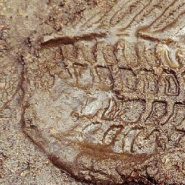Posted by Jeff on Feb 1, 2020 @ 6:49 am in Hiking News | 0 comments | Last modified: January 31, 2020
To avoid trail widening, unnecessary erosion, soil damage, higher maintenance costs and labor demands, trail crews ask us to be responsible trail users when the ground is water logged and muddy. Bikes and horses can cause the most damage, but foot traffic is also destructive when the ground is wet. “If people must go out, we want them to stay on the trails. Please avoid walking around puddles because it damages vegetation and creates trail widening,” said a Land Access Manager.
He recommends hikers reschedule an outing when storms hit because windy conditions can be dangerous. Tree roots can lose their footing, rocks can tumble down slopes and high winds can break branches and topple trees.
For folks who just can’t help themselves and need to get outside despite foul weather, try using alternative trails including those that are paved. Water is, of course, the number one enemy of any trail.
Trails can take a week or two to dry out depending on the slope, elevation and soil type. Look for south-facing trails and trails at lower elevations that dry out more quickly.
The following are paid links. As an Amazon Associate I earn from qualifying purchases.
 I am Jeff Clark, founder of Internet Brothers, producer of this blog, and passionate about hiking. I live in Western NC near the Blue Ridge and Great Smoky Mountains. Pisgah and Nantahala National Forests are just out my door, so the content will focus on these areas, but let me know what you would like to see on the site.
I am Jeff Clark, founder of Internet Brothers, producer of this blog, and passionate about hiking. I live in Western NC near the Blue Ridge and Great Smoky Mountains. Pisgah and Nantahala National Forests are just out my door, so the content will focus on these areas, but let me know what you would like to see on the site. 
Copyright © 2011-2023 Internet Brothers. All Rights Reserved. ISSN 2324-6057
Designed by Elegant Themes | Powered by Wordpress | Logo by Design Aspirations

